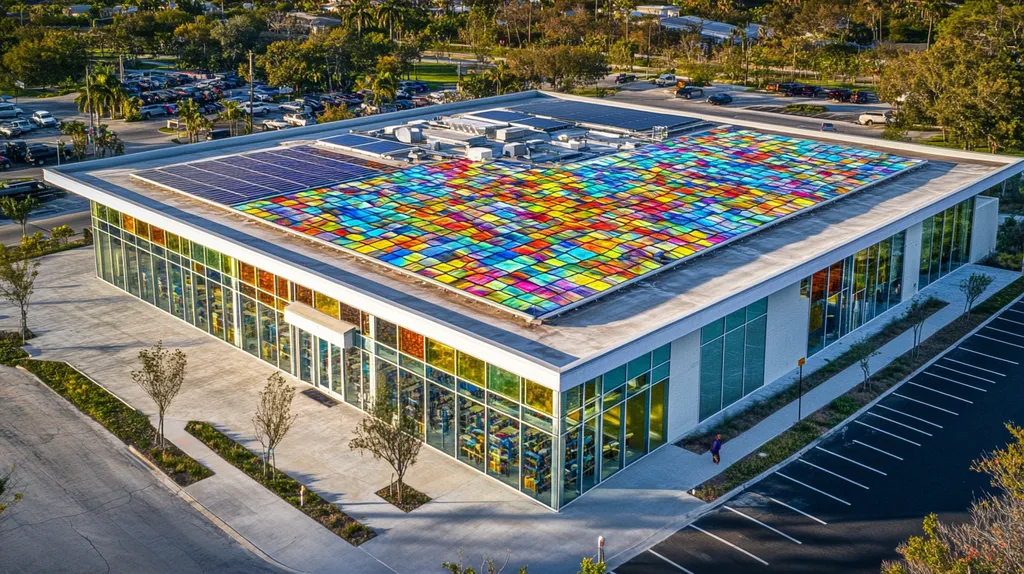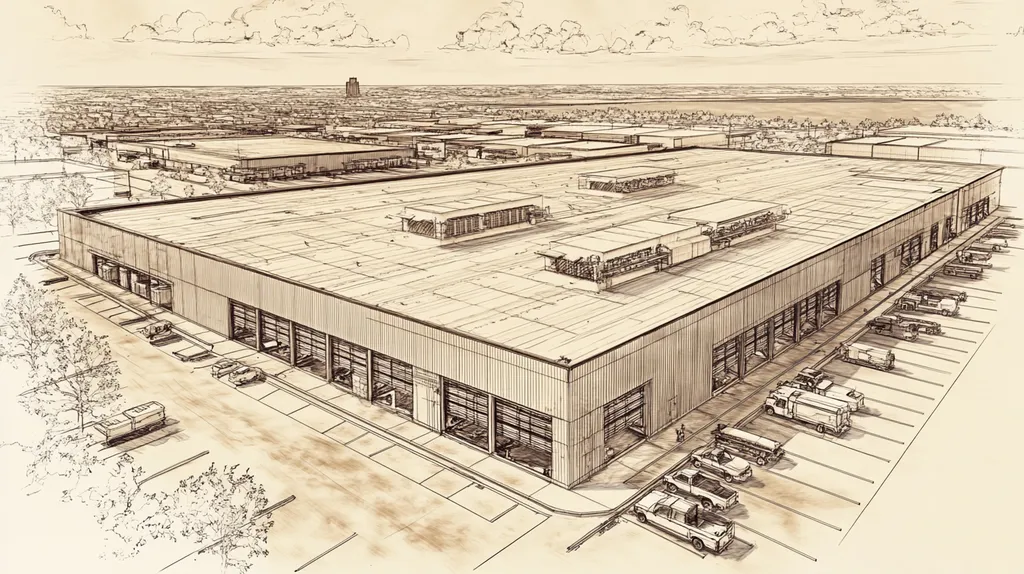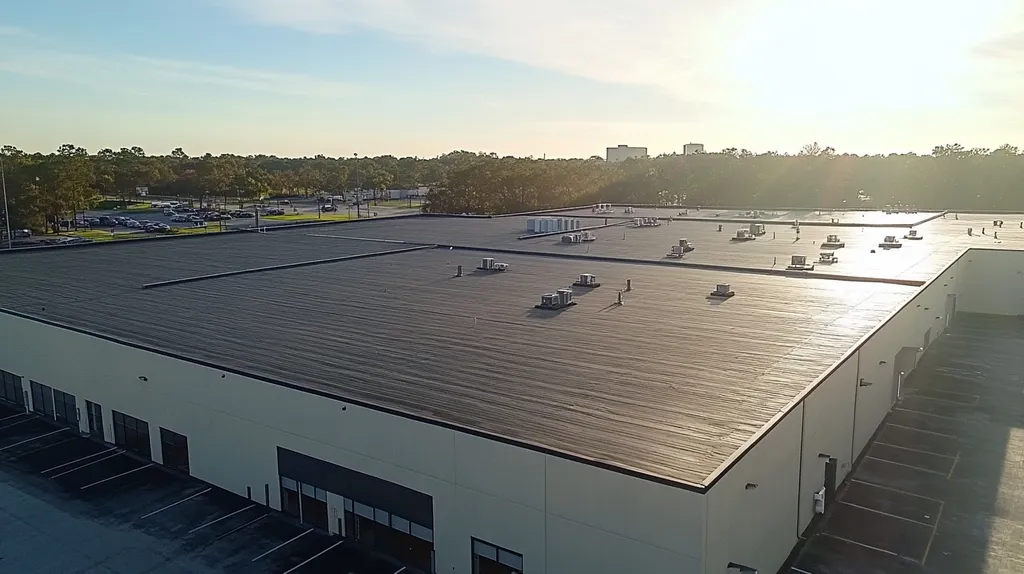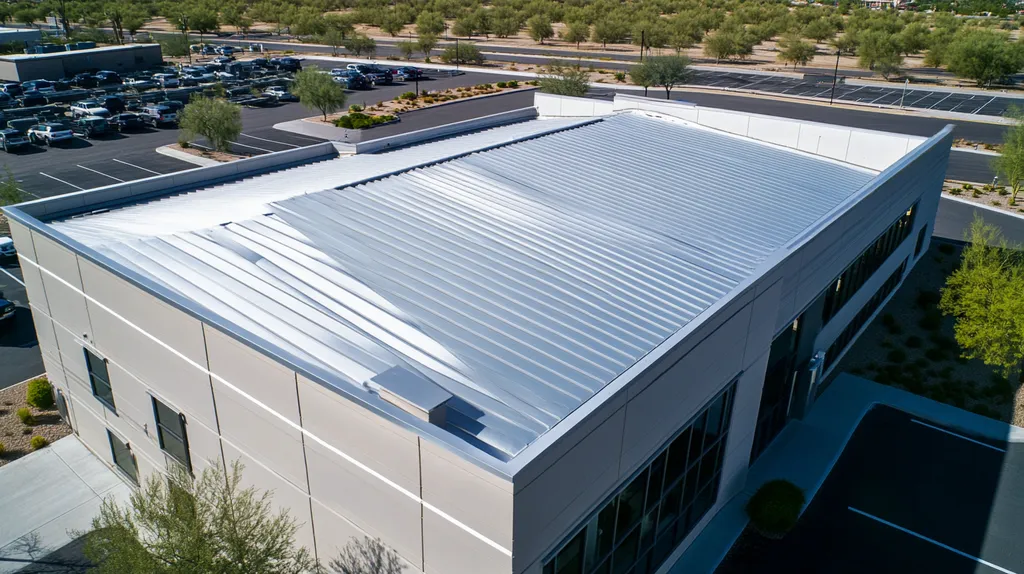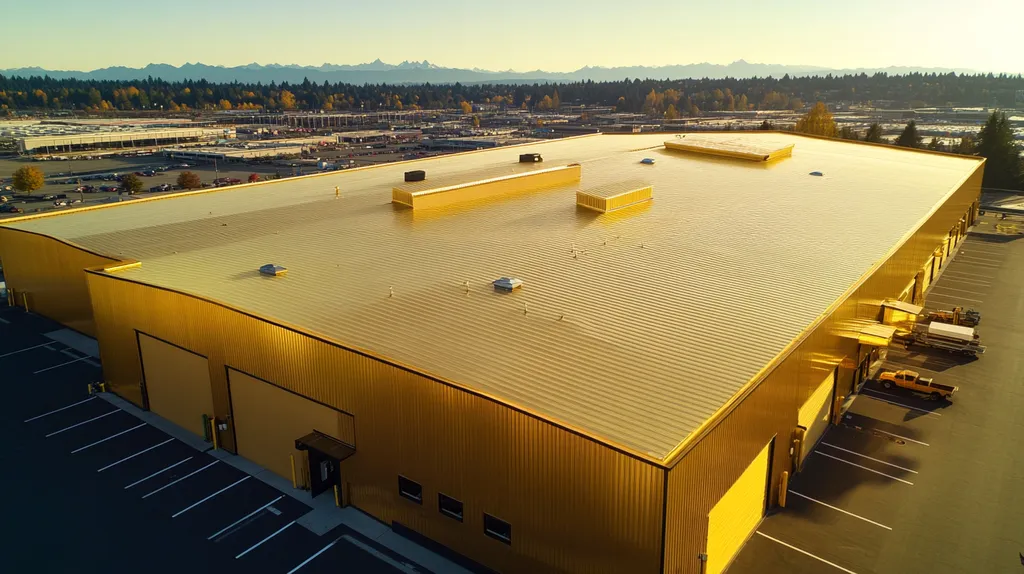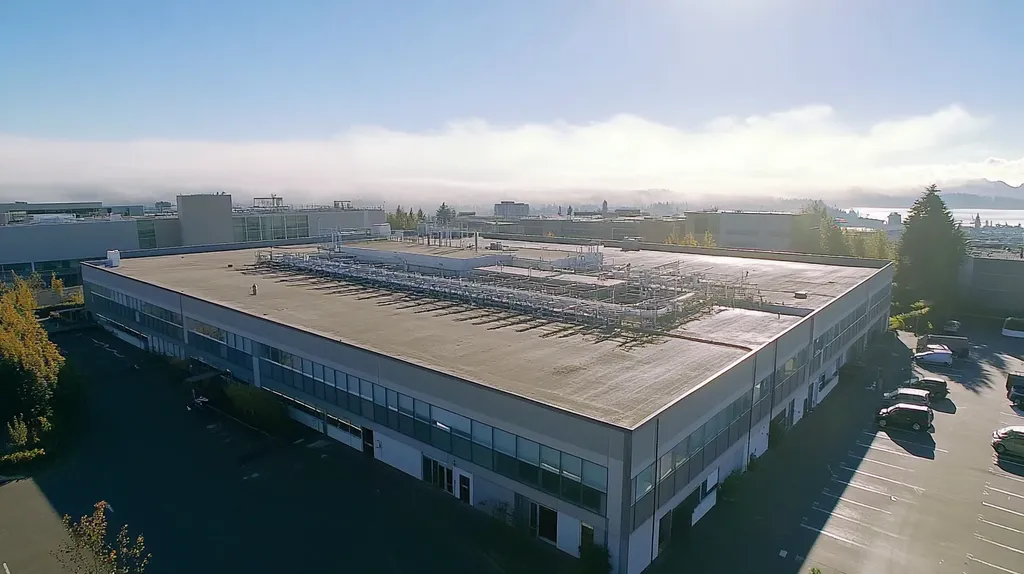Each year, commercial property owners lose millions in repair costs due to misunderstood or improperly maintained roof warranties. Industry data shows that over 65% of warranty claims are initially denied due to documentation errors or maintenance oversights.
For facility managers and building owners, navigating the complex landscape of commercial roof warranties can mean the difference between comprehensive protection and catastrophic expenses.
This comprehensive guide examines the critical elements of commercial roofing warranties, from fundamental coverage types to optimization strategies that maximize protection while minimizing long-term costs.
SECTION 1: FUNDAMENTAL CONCEPTS
Commercial roofing warranties represent a critical safeguard for property investments, yet statistics show that over 60% of warranty claims are initially denied due to misunderstandings about coverage. For facility managers and property owners, navigating warranty options can mean the difference between a protected investment and devastating repair costs. Whether managing a single building or overseeing multiple properties, understanding the fundamentals of roofing warranties is essential for long-term asset protection.
Types of Commercial Roof Warranties Explained
Commercial roofing warranties come in three primary categories: manufacturer warranties, contractor warranties, and system warranties. Each serves a distinct purpose in protecting different aspects of your roofing investment.
Manufacturer warranties focus on material integrity, covering defects in the roofing products themselves. These warranties protect against premature deterioration, material failure, and manufacturing defects that could compromise roof performance.
Contractor warranties address installation quality and workmanship. These guarantees ensure that your roof system was properly installed according to manufacturer specifications and industry standards.
System warranties provide the most comprehensive coverage by combining both material and installation protection. These warranties typically require installation by certified contractors and regular maintenance to remain valid.
Coverage Scope: Material vs. Workmanship Guarantees
Material guarantees specifically cover the physical components of your roofing system. This includes protection against premature aging, material degradation, and factory defects that could lead to system failure.
Workmanship coverage addresses the human element of roof installation. This protection ensures that all components are properly installed, sealed, and integrated according to manufacturer specifications.
The intersection of these two warranty types creates a critical safety net. Even the highest quality materials can fail if improperly installed, while perfect installation cannot overcome defective materials.
Understanding the specific scope of each warranty type helps property owners identify potential coverage gaps and ensure comprehensive protection for their roofing investment.
Warranty Duration and Common Limitations
Commercial roof warranty durations typically range from 10 to 35 years, depending on the system chosen and contractor certification level. Longer warranties often indicate higher-quality materials and installation standards. (source: GAF)
Most warranties include specific maintenance requirements that must be followed to maintain coverage. These typically involve regular inspections, documented maintenance, and prompt repairs when issues are identified.
Common exclusions include damage from severe weather events, unauthorized repairs, and modifications to the roof system. Understanding these limitations helps property owners maintain valid coverage and avoid unexpected repair costs.
Pro-rated warranties reduce coverage over time, potentially leaving property owners with minimal protection in later years. Carefully reviewing these terms before installation helps prevent surprises when warranty claims become necessary.
SECTION 2: SYSTEM COMPONENTS
A commercial roof represents one of the largest capital investments for any property, with replacement costs often exceeding $250,000 for a typical 20,000 square foot building. Understanding warranty components is crucial, as approximately 40% of all commercial roof failures occur due to misunderstandings about coverage and maintenance requirements. This section examines the vital relationships between manufacturers and contractors, explores NDL warranty coverage, and identifies critical exclusions that could impact protection.
Manufacturer vs. Contractor Warranty Responsibilities
Think of manufacturer and contractor warranties as two halves of a protective shield – both must work together to provide complete coverage. Manufacturers typically warrant the physical roofing materials against defects, premature deterioration, and performance issues.
Contractor warranties focus on installation quality, covering proper attachment methods, seam integrity, and flashing details. This division of responsibility ensures accountability at every level of the roofing system.
When problems arise, understanding these distinct roles becomes critical. A leak might stem from defective materials (manufacturer’s responsibility) or improper installation (contractor’s responsibility).
Property owners must maintain documentation from both parties and understand the claim process for each. Clear communication channels with both the manufacturer and contractor help expedite resolution when issues occur.
Components Covered Under No Dollar Limit (NDL) Warranties
NDL warranties represent the gold standard in commercial roofing protection, covering both materials and labor costs without monetary caps. These warranties typically include the complete roofing assembly: membrane, insulation, fasteners, adhesives, and edge metal components.
The membrane layer receives primary coverage, protecting against manufacturing defects, premature aging, and material breakdown. Insulation and cover boards are included to ensure thermal efficiency and system integrity.
Flashings, which are critical for preventing water infiltration at roof penetrations and edges, fall under NDL protection. This coverage extends to both pre-fabricated and field-fabricated components.
Metal components like copings, termination bars, and drainage systems are typically covered when installed as part of the complete system. However, some accessories may require separate registration or documentation.
Exclusions and Conditions Affecting Coverage
Common warranty exclusions can create significant exposure for property owners. Most warranties exclude damage from severe weather events, chemical exposure, unauthorized modifications, and improper maintenance practices.
Regular maintenance requirements form a crucial condition of coverage. Most warranties mandate professional inspections at least twice annually, with documented repairs of any identified issues.
Building use changes can impact warranty validity. Adding new roof penetrations, installing equipment, or changing the building’s purpose may void coverage unless properly coordinated with the manufacturer.
Environmental conditions like ponding water, biological growth, or excessive foot traffic often fall outside warranty protection. Property owners must understand these limitations to implement appropriate preventive measures.
SECTION 3: IMPLEMENTATION METHODS
The difference between a protected investment and a costly nightmare often comes down to proper warranty implementation. Studies show that over 70% of commercial roof warranty claims face initial denial due to improper documentation or installation issues. For property owners managing multimillion-dollar assets, understanding proper implementation methods isn’t just important – it’s essential for protecting their investment and avoiding devastating repair costs.
Procedures for Filing Warranty Claims
The warranty claim process requires immediate action when issues arise. Most manufacturers mandate reporting within 30 days of discovering damage, making swift response critical for maintaining coverage.
Before filing, property owners must gather essential documentation including original warranty certificates, maintenance records, and detailed descriptions of the issues. Photos and videos of damage provide crucial visual evidence to support claims.
Initial contact should always go through approved channels – usually the original installer or a manufacturer-certified contractor. Going outside these channels or attempting DIY repairs can void warranty coverage.
Track all communication with warranty providers in writing. Email trails and certified mail provide documentation of timely reporting and follow-up, protecting your rights under the warranty terms.
Importance of Certified Contractors and Installation Standards
Using certified contractors isn’t just a recommendation – it’s a requirement for maintaining warranty coverage. Only contractors who have completed manufacturer-specific training programs can install systems that qualify for full warranty protection.
These certifications ensure installers understand proper techniques for specific roofing systems. From membrane attachment to flashing details, certified contractors follow precise specifications that protect long-term performance.
Regular updates to certification requirements keep contractors current with evolving technology and installation methods. This ongoing education translates to better quality control and fewer warranty issues.
Working with certified contractors provides access to enhanced warranty options with longer durations and broader coverage. This relationship becomes particularly valuable when warranty claims arise.
Documentation and Recordkeeping Best Practices
Create a dedicated digital folder for all roofing documentation, including warranty certificates, inspection reports, and maintenance records. This centralized system ensures quick access when needed for warranty claims.
Implement a regular inspection schedule with detailed documentation. Take dated photos of the roof’s condition, focusing on potential problem areas like drains, penetrations, and seams.
Maintain a maintenance log recording all work performed, including routine cleaning and repairs. Include contractor information, work descriptions, and materials used for each service visit.
Store copies of all documentation in multiple locations, including cloud-based systems. This redundancy protects critical records from loss and provides easy sharing with warranty administrators when needed.
Update your documentation system annually to reflect any changes in warranty requirements or contact information. This regular review helps identify potential issues before they impact warranty coverage.
SECTION 4: MAINTENANCE REQUIREMENTS
Studies reveal that 85% of commercial roof failures stem from inadequate maintenance, with the average premature roof replacement costing businesses over $300,000. For property owners and facility managers, understanding and following warranty-mandated maintenance requirements isn’t just about preserving coverage – it’s about protecting a critical asset that safeguards millions in property value. Proper maintenance extends roof lifespan by up to 50% while ensuring warranty protection remains intact when issues arise.
Routine Inspection Schedules to Preserve Warranty Validity
Most commercial roof warranties mandate professional inspections at least twice annually – typically in spring and fall. These inspections must evaluate membrane condition, seam integrity, drainage systems, and flashings while documenting findings with photos and detailed reports.
High-traffic areas and regions around rooftop equipment require monthly visual checks by facility staff. These frequent assessments help catch developing issues before they escalate into major problems that could void warranty coverage.
Inspection timing should align with seasonal challenges – checking drainage before heavy rains, examining seams before extreme temperature shifts, and assessing membrane condition before winter weather sets in.
Creating a documented inspection schedule demonstrates warranty compliance while building a historical record of roof condition. This documentation proves invaluable when warranty claims arise.
Preventative Maintenance Actions Required by Warranties
Basic maintenance requirements include removing debris monthly, cleaning drains quarterly, and addressing ponding water within 48 hours. These simple tasks prevent accelerated deterioration that warranties won’t cover.
Only manufacturer-approved cleaning products and maintenance methods may be used. Using unauthorized chemicals or pressure washing techniques can compromise membrane integrity and invalidate warranty protection.
All repairs must be performed by certified contractors using approved materials. Even minor patches by unqualified personnel can void coverage for entire roof sections.
Maintain detailed maintenance logs recording all activities, including cleaning, repairs, and equipment service. These records serve as proof of compliance during warranty claims.
Impact of Maintenance Neglect on Warranty Enforcement
Warranty administrators cite maintenance neglect in over 60% of claim denials. Common issues include failure to clear drains, delayed repair of minor damage, and use of unauthorized repair methods.
Manufacturers can void coverage if maintenance lapses create conditions that accelerate deterioration. Examples include standing water from clogged drains, membrane damage from accumulated debris, and mold growth in poorly ventilated areas.
The financial impact extends beyond voided warranties. Neglected roofs typically require replacement 7-10 years earlier than well-maintained systems, doubling lifetime ownership costs.
Regular maintenance investment typically represents just 1-2% of roof replacement cost annually while extending service life by 25-50%. This preventive approach ensures warranty protection remains valid throughout the roof’s lifespan.
SECTION 5: PERFORMANCE METRICS
Performance metrics serve as the vital signs of your commercial roofing system. Industry data shows that buildings lacking proper performance tracking experience 40% more roof-related emergencies and pay nearly double in lifetime maintenance costs. For a typical 50,000-square-foot commercial roof, this difference can exceed $500,000 over the system’s lifespan. Understanding and tracking these metrics isn’t just about maintaining warranty compliance – it’s about protecting your entire building investment.
Key Indicators for Roof System Warranty Compliance
Essential performance indicators include membrane thickness measurements, seam integrity testing, and drainage efficiency rates. These metrics provide early warning signs of potential system failures before they compromise warranty coverage.
Regular thermal imaging scans should track insulation saturation levels quarterly. Even minor moisture intrusion can escalate rapidly, leading to comprehensive system failure if left undetected.
Surface deterioration rates must be measured annually through standardized testing protocols. This includes membrane elasticity, surface erosion, and adhesion strength at critical points.
Premium roofing systems may offer coverage extending up to 50 years, though maintaining this protection requires rigorous documentation of all performance metrics. (source: GIDEON)
Measuring Success: Leak Prevention and Material Integrity
Successful roof performance starts with a zero-tolerance approach to water infiltration. Track all moisture-related incidents, including their location, severity, and resolution time, to identify systemic vulnerabilities.
Material integrity measurements should include periodic core samples and adhesion testing. These assessments verify that the roof system maintains its protective capabilities throughout its service life.
UV degradation rates require systematic monitoring, especially in high-exposure areas. Document surface reflectivity changes and material thickness variations to predict potential failure points.
Establish baseline performance metrics during installation and track deviations quarterly. This creates a clear record of system behavior and helps justify warranty claims when necessary.
Tracking Warranty Service Response and Resolution Times
Document every service request with precise timing metrics. Include initial contact time, contractor response, site visit scheduling, and final resolution dates to maintain accountability.
Calculate average response times for different severity levels of roofing issues. Emergency leaks should see response times under 4 hours, while routine maintenance items might allow 48-72 hour windows.
Monitor resolution effectiveness by tracking repeat issues at specific locations. Multiple service calls to the same area often indicate underlying problems requiring comprehensive solutions.
Create detailed service logs that include weather conditions, repair methods, and materials used. This documentation proves invaluable during warranty claims and helps identify trends in system performance.
SECTION 6: OPTIMIZATION STRATEGIES
Commercial roof warranties represent a significant investment, with improper optimization costing property owners an average of $2.75 per square foot in preventable expenses over a roof’s lifetime. For a typical 50,000-square-foot commercial building, this oversight amounts to $137,500 in unnecessary costs. Strategic warranty optimization isn’t just about selecting coverage – it’s about creating a comprehensive protection plan that maximizes return on investment while minimizing long-term expenses.
Selecting Warranty Options for Long-Term Cost Efficiency
Warranty selection must align with building use, environmental conditions, and long-term ownership plans. Premium warranties offering comprehensive NDL coverage often deliver superior value despite higher initial costs by eliminating unexpected repair expenses.
Compare coverage terms against historical repair data for your region and building type. Areas with extreme weather patterns may benefit from enhanced coverage options that specifically address environmental stressors.
Factor maintenance costs into warranty selection decisions. Some premium warranties include annual inspections and preventive maintenance, potentially offering significant savings over standard coverage options.
Consider ownership timeline when evaluating warranty duration. Properties planned for long-term holding benefit from extended coverage terms, while shorter ownership periods may justify standard warranty packages.
Leveraging Extended Warranties and Guarantee Extensions
GAF offers commercial roof warranties ranging from 10 to 35 years, with guarantee extensions available based on system type and contractor certification level. These extensions provide crucial protection during the latter stages of roof life when problems are most likely to develop. (source: GAF)
Review extension qualification requirements early in the project planning phase. Many manufacturers offer preferential pricing on extensions when purchased alongside initial warranty coverage.
Document all maintenance activities that support extension eligibility. Creating comprehensive maintenance records strengthens your position when negotiating extended coverage terms.
Coordinate extension purchases with major maintenance milestones. This timing often unlocks additional coverage options and more favorable pricing structures.
Strategies for Coordinating Maintenance with Warranty Terms
Create a digital maintenance tracking system that aligns inspection schedules with warranty requirements. This system should generate automatic alerts for upcoming maintenance deadlines and document completion of required services.
Establish clear communication protocols between facility staff and warranty providers. Designate specific individuals responsible for warranty compliance and maintenance coordination.
Develop standardized inspection checklists that incorporate all warranty-mandated review points. These checklists ensure consistent documentation and help identify potential issues before they impact warranty status.
Schedule maintenance activities during optimal weather conditions to maximize effectiveness. Coordinate intensive maintenance during moderate temperature periods to reduce stress on roofing materials and improve repair quality.
Build relationships with certified contractors who understand your warranty requirements. Regular communication helps ensure all maintenance activities comply with warranty terms while protecting your coverage.
The Bottom Line
With over $3 billion lost annually to commercial roof failures stemming from warranty mismanagement, understanding and optimizing warranty protection has never been more critical.
The most successful property owners approach warranties as active risk management tools rather than passive insurance policies, implementing rigorous maintenance protocols and documentation systems.
By selecting appropriate coverage levels, maintaining proper documentation, and following manufacturer-specified maintenance requirements, facility managers can extend roof lifespans by up to 50% while ensuring warranty protection remains intact.
For commercial properties, the difference between comprehensive warranty protection and catastrophic expense often comes down to understanding these fundamental concepts and implementing them with precision and consistency.
The future of commercial roofing protection lies in proactive warranty management that treats these critical documents as strategic assets rather than mere paperwork.
FREQUENTLY ASKED QUESTIONS
Q. What are the main types of commercial roof warranties?
A. The main types include manufacturer warranties, contractor warranties, and system warranties. Manufacturer warranties focus on material defects, while contractor warranties ensure proper installation. System warranties combine both for overall protection.
Q. How do manufacturer and contractor warranties differ for an industrial roof?
A. Manufacturer warranties cover materials against defects, while contractor warranties ensure proper installation. Understanding these roles is vital for addressing potential issues that may arise.
Q. What steps should I follow to file a claim for my commercial roof?
A. First, document the issue and gather your warranty details. Then, report the damage to your contractor or manufacturer within the required timeframe, usually 30 days. Keep records of all communication to support your claim.
Q. Why is routine maintenance critical for a commercial roof warranty?
A. Regular maintenance is essential because most warranties require documented inspections to remain valid. It prevents potential issues that could lead to costly repairs and warranty denials.
Q. What performance metrics should I track for my commercial roof?
A. Key metrics include membrane thickness, seam integrity, and drainage efficiency. Keeping track of these indicators helps identify potential system failures before they affect your warranty.
Q. How can I optimize warranty coverage for my industrial roof?
A. Choose warranties that match your building’s use and local conditions. Regular maintenance and timely inspections can maximize the value of your warranty protections.
Q. What common exclusions should I watch out for in commercial roof warranties?
A. Common exclusions include damage from severe weather, unauthorized repairs, and lack of maintenance. Understanding these exclusions is vital to ensuring your warranty remains valid and effective.

